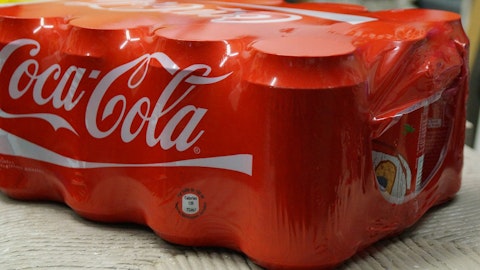Jim Snee: Good morning.
Michael Lavery: I just wanted to unpack pricing a little bit. And, I guess, just would love to understand in your guidance. Does it factor in — can you quantify roughly what amount of pricing is included in the growth outlook? And how much is that, just — are you counting on just the pricing you’ve already taken flowing through, rolling into next year, or do you anticipate new pricing actions on top of that?
Jim Snee: Yes. Good morning, Michael. What we’ve not factored in there right now are the pricing actions that we’ve taken. And so, again, if you think about the grocery products pricing that went into place in the fourth quarter, our Jennie-O Turkey Store pricing that we put in place really also in the fourth quarter. On the refrigerated side of the business, we’ve taken pricing on pepperoni. And so, we’ve got some pretty significant wraparound pricing there. And as we’re thinking about 2023, just what I said earlier is, we’re really watching the price gaps in the categories. We have to be very responsible. We are seeing some gaps close. And we’re also looking at those areas where we can be a bit more precise and strategic. So what we have in there today is already what we’ve taken, but we are assessing where there are those opportunities and where it’s necessary going forward.
Michael Lavery: Okay. Thanks. That’s helpful. And just on the margin outlook and maybe not necessarily specific to next year or fiscal 2023. It seems like you’re guiding for some modest margin expansion. But as you think about just where margin levels were two, three years ago, how much can you restore that, or how long does it take? What’s sort of the outlook as far as the margin build going forward?
Jim Snee: Yes. As we’re thinking about it, the headwinds that we’ve covered down or had to cover down over the last several years are pretty significant. And the team has done a great job, when we think about some of the commodity costs that we’ve had, we’ve talked a lot about freight and warehousing costs. So as we think about relief from some markets, we’ve got in still incredibly high markets, some of the packaging costs. We’ve got to do a better job of taking costs out of our supply chain and our operations. And so it’s all of those things that we need to focus on, but also get some moderation on, which to say is going to happen in any specific point in time. If we’ve learned anything over the last three years is that’s really hard to do. But thinking about the things that we can control and focusing on those things is really what’s going to allow us to continue on this journey of margin expansion.
Michael Lavery: Okay, great. Thanks so much.
Operator: And our next question today comes from Eric Larson at Seaport Research Partners. Please go ahead.
Eric Larson: Yes. Thanks. I hope everybody had — thanks for taking my question. I hope everybody had a good Turkey Day. I was thinking that you could have given your employees a really nice nontaxable bonus just by giving turkey this year.
Jim Snee: You should have called us sooner.
Eric Larson: Exactly. So Jim, I, like others, we’re just kind of struggling to kind of think through the process of your new structure, which we will eventually get used to. But for people like me, I’ve been looking at your business this way previously — it’s measured in decades, as you know. So, I guess my first question that I want to ask is — I think you’ve now — and it relates to your commodity sales business — your commodity sales, your commodity pork sales, which I think you now have effectively by contract. I don’t think you have much of that anymore. And I’d like an update on that as well. And then, the commodity sales also for Jennie-O, I know I don’t have a huge Foodservice business, but why would Foodservice not participate in some of the ups and downs in the commodity pricing market, given that neither retail nor foodservice would be responsible for that commodity business solely?
So, how do the commodity sales for all the stuff kind of land in your new retail, foodservice, international structure?
Jim Snee: Yes. Great question, Eric. So, a couple of things. I mean as we head into this new operating model, I mean, clearly, we’re going to continue to provide clarity and education. The key takeaway in all of this is really about how we are able to align our strategy with our structure. And although we’ve had all of our different reporting segments historically, we haven’t had it as well aligned as it could be. So that’s really where we’re heading. David and the team will obviously be spending a lot of time on the education front to make sure everybody understands what is, where and why. From a Jennie-O perspective, as we think about how that commodity business in particular falls, it will fall between our retail and international business.
And so there will be elements that will fall in both. When the other part of it, as you mentioned, is the foodservice piece, is there’s still a significant Jennie-O business in our Foodservice segment. And then the other part you mentioned was just in regards to traditional pork commodity sales. And that business, I mean, our team has done just a great job over the last number of years, finding ways to really derisk the business, derisk the commodity side. And right now, we’re less than 10%. And so that’s a journey that we’ve been on for a very long time. We continue to stay focused on that. And the team has just done a great job. So hopefully, that gives you a little more clarity. But just so you know, as we get into 2023, we’ll have those opportunities for education and further discussion.
Eric Larson: Okay. Thanks guys. I appreciate the time.





